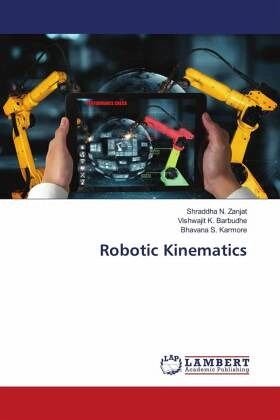
Robotic Kinematics
Versandkostenfrei!
Versandfertig in 6-10 Tagen
29,99 €
inkl. MwSt.

PAYBACK Punkte
15 °P sammeln!
Robotic kinematics is a pivotal field within robotics that focuses on the study of the motion and geometry of robot systems. It involves the mathematical representation and analysis of the spatial configuration and movement of robot mechanisms, enabling the precise description of their positions, orientations, and trajectories. Researchers and engineers in this field explore various types of kinematic structures, such as serial and parallel manipulators, to understand how robots move in their environments. The foundations of robotic kinematics encompass topics like forward kinematics, which ca...
Robotic kinematics is a pivotal field within robotics that focuses on the study of the motion and geometry of robot systems. It involves the mathematical representation and analysis of the spatial configuration and movement of robot mechanisms, enabling the precise description of their positions, orientations, and trajectories. Researchers and engineers in this field explore various types of kinematic structures, such as serial and parallel manipulators, to understand how robots move in their environments. The foundations of robotic kinematics encompass topics like forward kinematics, which calculates the end-effector position based on joint angles, and inverse kinematics, which determines the required joint angles to achieve a desired end-effector position. Additionally, the field delves into differential kinematics to analyse velocities and accelerations of robot components. Robotic kinematics plays a crucial role in the design, control, and optimization of robotic systems, influencing applications across industries, including manufacturing, healthcare, and autonomous vehicles.












